To ask for a referral on LinkedIn, be clear and specific about what you’re seeking and how it would benefit both you and the referrer. Express gratitude for their time and follow up if needed.
Remember to be patient, courteous, and respectful throughout the process. Asking for a referral on LinkedIn can be a powerful way to expand your professional network and uncover new job opportunities. However, it’s crucial to approach the process with tact and professionalism.
In this blog post, we will explore effective strategies on how to ask for a referral on LinkedIn. By following these guidelines, you can increase your chances of receiving valuable referrals that can boost your career prospects. So, let’s dive in and discover how to navigate this process with confidence and success.

Credit: www.linkedin.com
The Power Of Linkedin Referrals
LinkedIn referrals are a powerful tool for expanding your professional network and unlocking new career opportunities. Leveraging the connections of your existing contacts can open doors to potential employers, clients, or collaborators. In this blog post, we will explore the significance of referrals and provide valuable insights into how to ask for a referral on LinkedIn effectively.
Why Referrals Matter
Referrals are crucial in the professional world as they offer a way to gain access to opportunities that may otherwise be inaccessible. They provide a level of credibility and trust, as your connection is vouching for your skills and expertise. Referrals can also streamline the hiring process for employers, as they are more likely to consider candidates who come recommended by trusted sources.
Linkedin’s Unique Advantage
LinkedIn, as a professional networking platform, offers a unique advantage for seeking referrals. It allows you to tap into your existing network of professionals and showcase your skills and experience. Through LinkedIn, you can identify mutual connections and leverage their endorsements to strengthen your professional reputation.
Before You Ask: Do Your Homework
Before reaching out for a referral on LinkedIn, it’s essential to do your homework. This involves researching potential referrers and understanding their influence. By taking these steps, you can significantly increase your chances of receiving a positive response and making a meaningful connection.
Research Potential Referrers
Researching potential referrers is crucial for identifying individuals who can provide valuable insights and introductions. Start by reviewing profiles of professionals in your industry or desired company. Look for common connections, shared interests, or past interactions that can serve as a foundation for your request. This proactive approach demonstrates your genuine interest and can facilitate a more personalized and effective outreach.
Understanding Their Influence
Understanding the influence of potential referrers involves evaluating their professional background, accomplishments, and network connections. Assess their level of expertise and industry authority, as well as their current role and responsibilities. By gaining insights into their sphere of influence, you can tailor your request to align with their interests and expertise, increasing the likelihood of a positive response. This targeted approach demonstrates your respect for their time and expertise, ultimately enhancing the effectiveness of your referral request.
Crafting Your Approach
Crafting Your Approach: How to Ask for a Referral on LinkedIn Politeness and clarity are key when asking for a referral on LinkedIn. Be specific about how it can benefit both parties and express gratitude for their time. Follow up after a few days if you don’t hear back, always maintaining patience and respect throughout the process.
Personalize Your Message
Crafting a personalized message is the key to asking for a referral on LinkedIn. Take the time to research the person you are reaching out to and find out how you can relate to them. Mentioning a common interest or experience can make your message more memorable and increase the chances of getting a response.Be Clear And Concise
When asking for a referral, it’s important to be clear and concise in your message. State your purpose for reaching out and be specific about what you are asking for. Avoid using vague language or beating around the bush, as this can make your message unclear and less likely to get a response.Follow Up
Following up is an essential part of asking for a referral on LinkedIn. If you don’t hear back after a few days, send a polite follow-up message to remind the person of your request. Keep in mind that people are busy and may need a gentle nudge to respond.Show Gratitude
Finally, it’s important to express gratitude when asking for a referral on LinkedIn. Thank the person for their time and consideration, and let them know how much you appreciate their help. Showing gratitude can leave a positive impression and increase the likelihood of future referrals. In summary, crafting a personalized message, being clear and concise, following up, and showing gratitude are essential components of asking for a referral on LinkedIn. By following these tips, you can increase your chances of success and expand your professional network.Building A Connection
When it comes to asking for a referral on LinkedIn, building a genuine connection with your potential referrer is crucial. Engaging with the person and offering value before asking for a referral not only increases the likelihood of a positive response but also nurtures a strong professional relationship.
Engage Before Asking
To maximize your chances of receiving a referral, engage with the individual on LinkedIn by interacting with their posts, commenting on their updates, and sharing their content. Genuine engagement demonstrates your interest in their work and can help you stand out when you eventually ask for a referral.
Offer Value First
Prioritize offering value to the person before asking for a referral. This could involve sharing industry insights, relevant articles, or introducing them to potential connections. By providing value, you establish yourself as a considerate and helpful professional, making them more inclined to support you with a referral.
Timing Your Request
When asking for a referral on LinkedIn, timing is crucial. Be patient and wait for the right moment to make your request, ensuring that you have built a strong relationship with the person you are reaching out to.
When To Reach Out
Timing is everything when it comes to asking for a referral on LinkedIn. You want to make sure that you’re not asking too soon or too late. It’s best to wait until you’ve built a relationship with the person you’re asking for a referral from. This means that you’ve had some interactions with them and they know who you are and what you do. You also want to make sure that you’re asking at a time when they are likely to be receptive to your request. For example, if they just had a major project or deadline, it may not be the best time to ask for a referral.Following Up Respectfully
After you’ve asked for a referral, it’s important to follow up respectfully. This means that you don’t want to be pushy or annoying, but you also don’t want to let the opportunity slip away. A good rule of thumb is to wait a few days after you’ve made your request and then send a polite follow-up message. In this message, you can thank them again for their time and consideration and let them know that you’re still interested in their referral. It’s also a good idea to offer to return the favor in the future if they ever need a referral or recommendation from you. To summarize, timing is key when asking for a referral on LinkedIn. Wait until you’ve built a relationship with the person and choose a time when they are likely to be receptive to your request. After you’ve asked, follow up respectfully and offer to return the favor in the future. By doing so, you’ll increase your chances of getting a valuable referral that can help you advance in your career.Composing The Perfect Referral Request
Asking for a referral on LinkedIn can be done in a polite and effective manner. Be clear and specific about how it would benefit both you and the referrer. Remember to express gratitude and follow up after a few days if you don’t hear back.
Structuring Your Message
When it comes to asking for a referral on LinkedIn, composing the perfect referral request is key. You want to make sure that your message is clear, concise, and respectful. Structuring your message in a thoughtful way can help increase the likelihood that your contact will be willing to provide a referral.What To Include And Exclude
When crafting your referral request, there are certain things you should be sure to include, as well as things you should exclude. Here are some tips:What to Include:
- Start with a personalized greeting that includes the person’s name.
- Remind them of how you know each other and the positive experiences you’ve had together.
- Explain why you are asking for a referral and what specific skills or experiences you would like them to highlight.
- Mention any relevant details about the job or opportunity you are seeking.
- Express gratitude and offer to reciprocate in the future.
What to Exclude:
- Avoid using a generic or overly formal greeting, as this can come across as impersonal.
- Don’t make the request too vague or open-ended. Be specific about what you are looking for.
- Avoid being too pushy or aggressive in your language. Remember to be polite and respectful throughout.
- Don’t forget to proofread your message before sending it. Typos or errors can make you appear unprofessional.
Handling Rejection Gracefully
When asking for a referral on LinkedIn, it’s important to be prepared for the possibility of rejection. Handling rejection gracefully can be a valuable learning experience and can even lead to future opportunities. Here’s how to handle rejection and turn it into a positive experience.
Responding To No
When you receive a rejection for a referral request on LinkedIn, it’s crucial to respond with grace and professionalism. Thank the person for considering your request and express your understanding of their decision. Keep the communication positive and leave the door open for future interactions.
Learning From The Experience
Every rejection is an opportunity to learn and improve. Take the feedback, if provided, constructively and use it to enhance your approach in future referral requests. Reflect on the experience and consider how you can refine your networking strategies to increase your chances of success.

Credit: www.linkedin.com
Turning Referrals Into Opportunities
Learn how to turn referrals into opportunities on LinkedIn by asking for them politely and effectively. Be clear and specific about what you’re looking for, express how it benefits both parties, and follow up after a few days if you don’t hear back.
Approach the process with patience, courtesy, and professionalism to expand your network and find new job prospects.
After Getting A Referral
Once you have received a referral, it’s important to follow up promptly and professionally. Send a thank-you message to the referrer, expressing your gratitude for their support. Let them know that you have reached out to the person they referred you to and express your enthusiasm for the opportunity.Maintaining Professional Relationships
Building and maintaining relationships is crucial in turning referrals into opportunities. Stay in touch with your connections through regular updates, messages, and comments. Share relevant content and offer your expertise to demonstrate your value to your network. Remember to be respectful of their time and not to overdo it with too many messages. A good rule of thumb is to reach out once every few months with a personalized message that adds value to the conversation. Turning referrals into opportunities is a powerful way to grow your professional network and advance your career. By following these tips, you can increase your chances of getting high-quality referrals and building strong relationships with your connections. Remember to be patient, courteous, and respectful throughout the process, and always follow up promptly to express your gratitude for their support.Best Practices And Common Pitfalls
When it comes to asking for a referral on LinkedIn, there are best practices to follow and common pitfalls to avoid. By understanding the dos and don’ts and learning from successful examples, you can maximize your chances of receiving valuable referrals that can benefit your professional network and career prospects.
Dos And Don’ts
- Do: Personalize your request by highlighting a specific aspect of your experience or skills that aligns with the potential referrer’s expertise.
- Do: Express gratitude and acknowledge the time and effort required for providing a referral.
- Do: Follow up with a polite reminder if you don’t receive a response after a reasonable period.
- Don’t: Send generic, mass messages requesting referrals without customizing them for each individual.
- Don’t: Pressure or guilt-trip the potential referrer into providing a referral.
- Don’t: Forget to reciprocate when the opportunity arises by offering your assistance or expertise in return.
Examples Of Successful Referral Requests
Successful referral requests on LinkedIn often involve a combination of personalization, clear value proposition, and respectful communication. Here are a few examples of effective referral requests:
| Example | Key Strategies |
|---|---|
| 1. Personalized Connection | Highlighting a shared interest or mutual connection to establish a personalized rapport. |
| 2. Value Proposition | Articulating the specific benefits of the referral for both the requester and the potential referrer. |
| 3. Gracious Follow-Up | Sending a polite follow-up message to express appreciation and understanding of the recipient’s time constraints. |

Credit: www.adweek.com
Leveraging Other Channels For Referrals
When it comes to leveraging other channels for referrals, LinkedIn is an invaluable tool, but it’s not the only platform you can use to ask for referrals. By utilizing other mediums, you can expand your reach and increase your chances of receiving valuable referrals. Let’s explore the effectiveness of using email and other platforms, as well as compare LinkedIn with other mediums for seeking referrals.
Using Email And Other Platforms
When it comes to seeking referrals, email can be a powerful tool. It allows for a more personalized and direct approach, enabling you to tailor your message to each recipient. When crafting your referral request email, be sure to highlight your skills, achievements, and the value you can bring to a potential opportunity. Additionally, consider leveraging other platforms such as professional networking forums, industry-specific websites, and online communities to connect with individuals who can provide referrals. Each platform offers its own unique benefits and can complement your efforts on LinkedIn.
Comparing Linkedin With Other Mediums
While LinkedIn is a dedicated professional networking platform, it’s essential to recognize the advantages of other mediums for seeking referrals. In contrast to LinkedIn, other platforms may offer a more informal setting, allowing for a different style of interaction and engagement. It’s important to adapt your approach based on the platform you’re using, ensuring that your communication remains professional and respectful. By comparing the effectiveness of LinkedIn with other mediums, you can identify the most suitable channels for requesting referrals based on your target audience and industry.
Frequently Asked Questions
How Do You Politely Ask For A Referral On Linkedin?
To politely ask for a referral on LinkedIn, be clear and specific about what you are looking for and how it would benefit both you and the referrer. Express gratitude for their time and consideration, and follow up after a few days if you don’t hear back.
Remember to be patient, courteous, and respectful throughout the process.
How Do You Respectfully Ask For A Referral?
To respectfully ask for a referral, be clear and specific about what you are seeking and how it would benefit both you and the referrer. Express gratitude for their time and consideration, and follow up after a few days if you don’t hear back.
Throughout the process, maintain patience, courtesy, and respect.
How Do You Politely Ask For A Recommendation On Linkedin?
Politely ask for a recommendation on LinkedIn by being clear and specific about the request. Explain how it benefits both parties and express gratitude. Follow up if necessary and maintain patience and respect throughout the process.
Is It Okay To Ask For Referrals On Linkedin?
Asking for referrals on LinkedIn is acceptable, but it’s important to do so tactfully and professionally. Clearly express the benefit for both parties and follow up courteously.
Conclusion
Asking for a referral on LinkedIn can be a powerful way to expand your professional network and uncover new job opportunities. However, it’s important to approach the process with tact and professionalism. When asking for a referral, be clear and specific about what you’re looking for and how it would benefit both you and the referrer.
Remember to express gratitude for their time and consideration, and follow up after a few days if you don’t hear back. Throughout the process, remain patient, courteous, and respectful. By following these guidelines, you can increase your chances of receiving valuable referrals on LinkedIn.

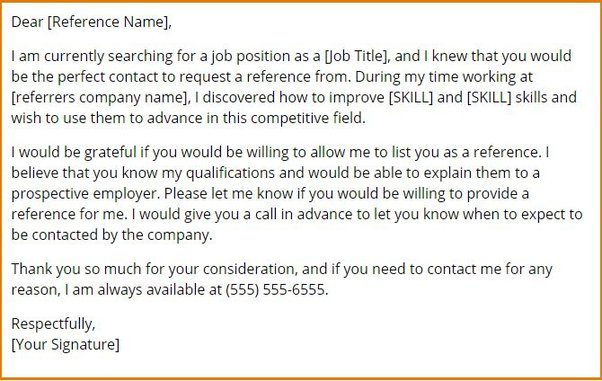




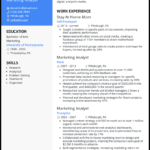
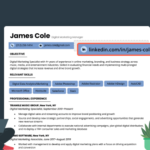
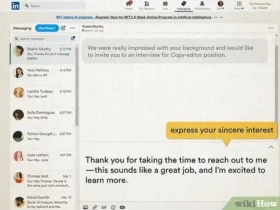
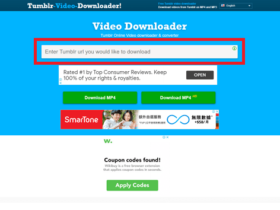
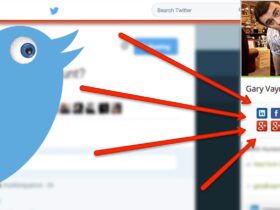
Leave a Reply